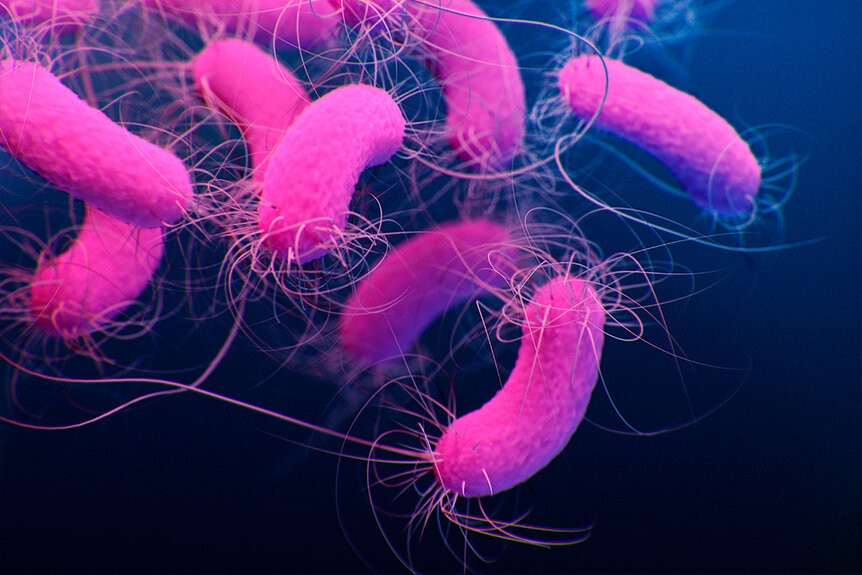Create a free profile to get unlimited access to exclusive videos, sweepstakes, and more!
New killer pesticide named in honor of Keanu Reeves’ deadly roles
Nobody, human nor mushroom, messes with Keanu, or at least not with keanumycins.

In the beloved action flick John Wick (streaming now on Peacock!), all Keanu Reeves' titular hero wanted was to mourn his late wife and enjoy a quiet retirement. That’s something his wife wanted for him, as well. In the last days of her life, she arranged for a puppy to arrive after her death, so John could direct his affection elsewhere in her absence. It was an incredible gesture of love from beyond the grave, but it was doomed from the start.
Only days after receiving the dog, with the wound of loss still raw, a group of unnamed thugs arrive at Wick’s house, murder his dog, and steal his car. The events of that night are an exercise in the realization that sometimes, what you don’t know can hurt you. A lot. See, John Wick is no ordinary widower. He’s the kind of killer other killers have nightmares about, and he is righteously pissed off.
RELATED: The ‘John Wick’ franchise’s 10 greatest action scenes, ranked
There’s something hilarious in the juxtaposition between Reeves’ public persona and the characters he plays. Reeves is widely beloved for his laid back attitude, chill demeanor, and unflagging kindness. Meanwhile, his onscreen characters will happily leave a pile of shell casings and rapidly cooling corpses in their wake, large enough to see from orbit. It is in honor of those characters that scientists have named a newly discovered and highly deadly antimicrobial compound.
The work was carried out by a team of German scientists at the Leibniz Institute for Natural Product Research and Infection Biology and published in the Journal of the American Chemical Society.
Researchers went looking for antimicrobial compounds inside bacteria from the genus Pseudomonas on a hunch. That’s because the bacteria is regularly observed being eaten by amoebae, and the bacteria fight back. Researchers found that Pseudomonas bacteria produce a compound which is toxic to ameobae and might be a useful tool for human agriculture and medicine.
Because some fungi share some characteristics with the bacteria’s primary predator, scientists suspected that the amoeba-killing compounds might also be effective against fungi, and they were right. In tests, researchers confirmed that the compounds produced by the so-called keanumycins were effective against fungal pathogens including Botrytis cinerea, a fungus which causes the disease known as gray mold rot.
The disease impacts most fruits and vegetables by infecting the flowers, buds, leaves, or stems. If left untreated, the disease causes brown spots of mold which ultimately cause the plant to rot, wither, and die. Crafting new antifungal treatments for plants could have an immeasurable effect on global food security. Fortunately, when scientists treated infected plants with the isolated keanumycins, the gray mold rot grew more slowly and retreated. In fact, the culture fluid which previously contained the target bacteria was enough to inhibit fungal growth, even after no bacterial cells were present.
RELATED: Keanu Reeves explains how 'The Matrix' films informed the action-packed world of 'John Wick'
The potential food security applications are great but we are also in the midst of an ongoing fight against human-infecting microbes. The same struggles which plague the world of antibiotics also exist in the fungal sphere. “We have a crisis in anti-infectives. Many human-pathogenic fungi are now resistant to antimycotics – partly because they are used in large quantities in agricultural fields,” said Sebastian Götze, first author of the study, in a statement.
In addition to being the scourge of amoebae and plant-eating-fungi everywhere, scientists wondered if keanumycins might also help out against human fungal pathogens. They found that it was strongly effective against Candida albicans, the microbe which causes common yeast infections in humans. Additionally, keanumiycins have shown no detrimental impact on human or plant cells and they break down in the environment, making them potentially useful in human and agricultural applications without the negative side effects of some existing alternatives. We don’t usually condone violence offscreen, but this is the kind of life and death conflict we can get behind.
Apparently, so can Reeves. In a recent Reddit AMA, Reeves had this to say about having an antifungal named for him. “...they should have called it John Wick… but that’s pretty cool… and surreal for me. But thanks, scientist people! Good luck, and thank you for helping us.”
Revenge might be a dish best served cold, but piping hot and filled with lead works too. Catch John Wick, John Wick: Chapter 2, and John Wick: Chapter 3 - Parabellum, streaming now on Peacock!



























